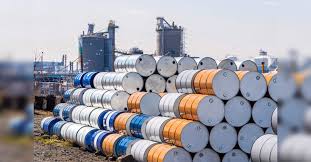Better technology could reduce the average production costs of all oil and gas resource classes by around 30 percent per barrel of oil equivalent by 2050. oil and gas supermajor BP said in its Technology Outlook 2018 published on Thursday.
The resources with the greatest scope for cost reduction are the most capital intensive. such as deep and ultra-deep water. and those requiring large numbers of wells. such as shale. BP noted. Improved rig and platform design. plus subsea and flow-line development. could cut costs for deepwater resources. while in shale drilling and production. a standardized. repetitive manufacturing-style approach could reduce costs. BP reckons.
Despite the technological benefits. the industry will still need to invest some US$600 billion annually in upstream oil and gas in order to meet projected demand. BP warned.
The supermajor’s technology outlook also discussed the hottest themes and buzzwords in technology right now. such as supercomputing. data analytics. and artificial intelligence.
“We estimate that application of digital tools. including sensors. supercomputing. data analytics. automation and artificial intelligence (AI). all supported by the networked computers of the ‘cloud’. could reduce primary energy demand and costs in sectors of the energy system by 20-30 percent by 2050.“ BP said.
Another hot topic for the oil industry and the peak oil demand narrative is the pace of the electric vehicles (EVs) adoption in the world. and BP weighed in on that issue as well.
“In our analysis. the costs of buying. running and fuelling electric and hybrid cars in Europe fall to become competitive with those of ICE-driven models before 2050.“ BP said. noting that its projections show that the average lifetime costs of a battery electric vehicle (BEV) would decline by around 50 percent by 2050. to just under those of a hybrid or a conventional ICE-based vehicle.
“Electric. hybrid and conventional vehicle costs are likely to converge before 2050 – independent of any policy impacts.“ BP said. Regarding technologies for power generation. BP estimates that the mix of technologies used for power generation in each region could change by 2050. Onshore wind farms will provide the cheapest source for new power supplies in China. Europe. and North America by 2050. closely followed by solar PV.
Specifically for North America’s power generation costs. BP expects that while gas and coal were the cheapest sources of power in 2015. onshore wind costs are set to fall below those of newly built gas plants well before 2050.
 Iran Energy News Oil, Gas, Petrochemical and Energy Field Specialized Channel
Iran Energy News Oil, Gas, Petrochemical and Energy Field Specialized Channel




